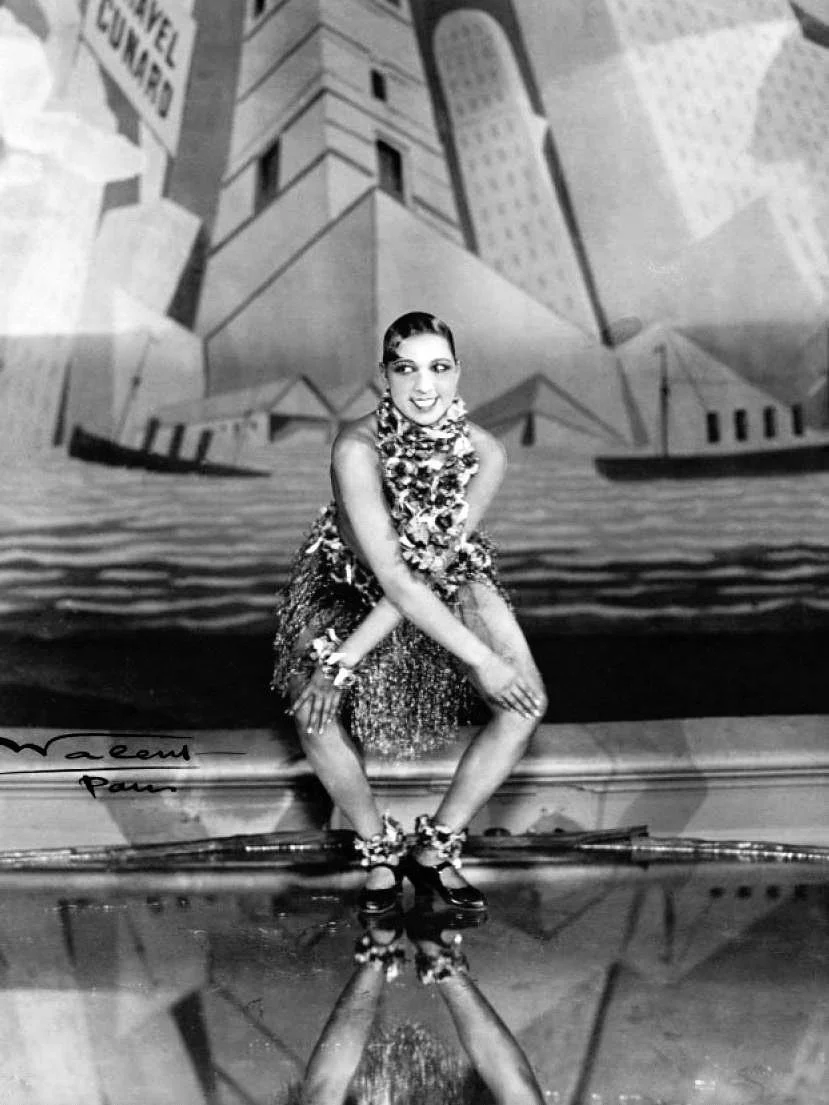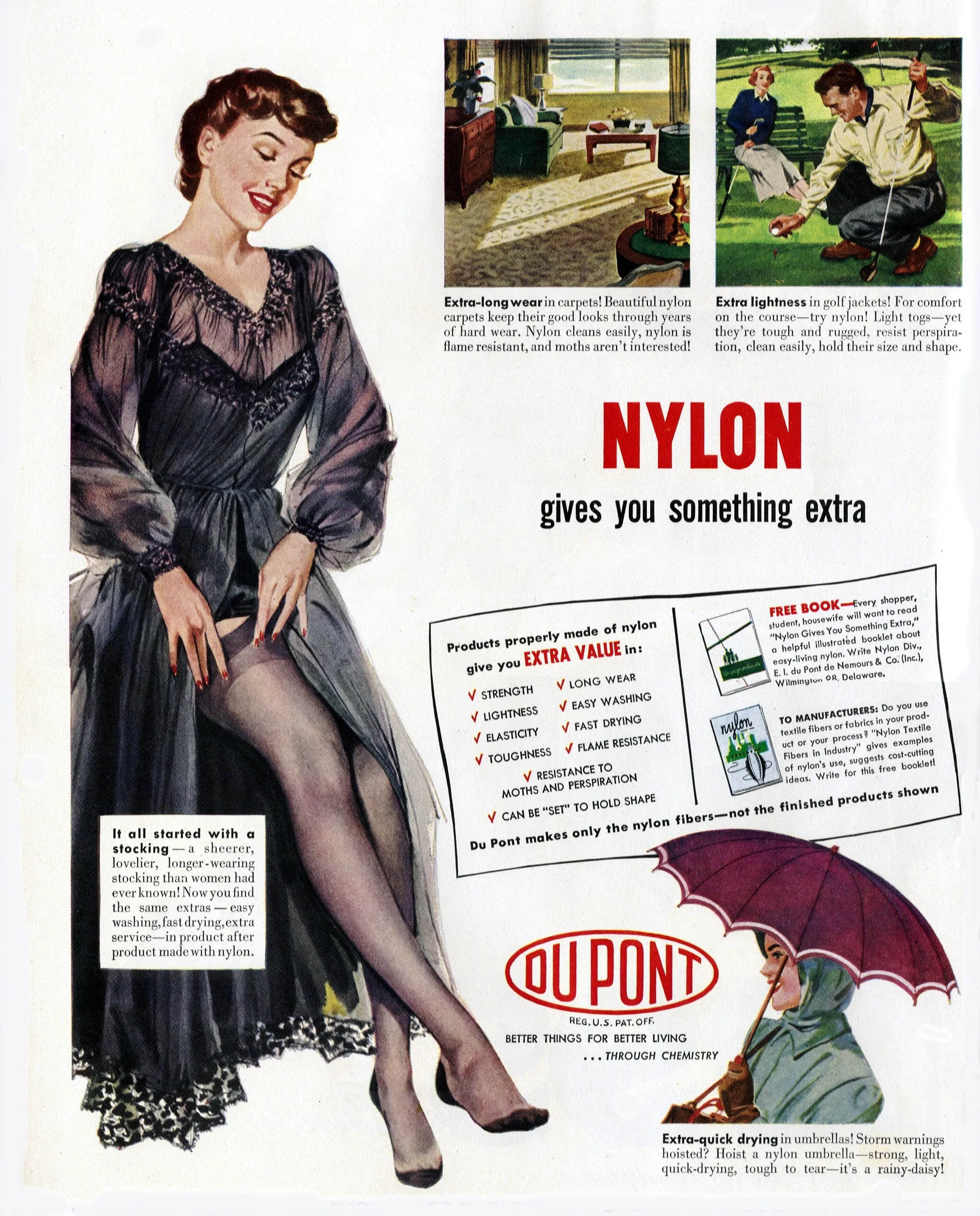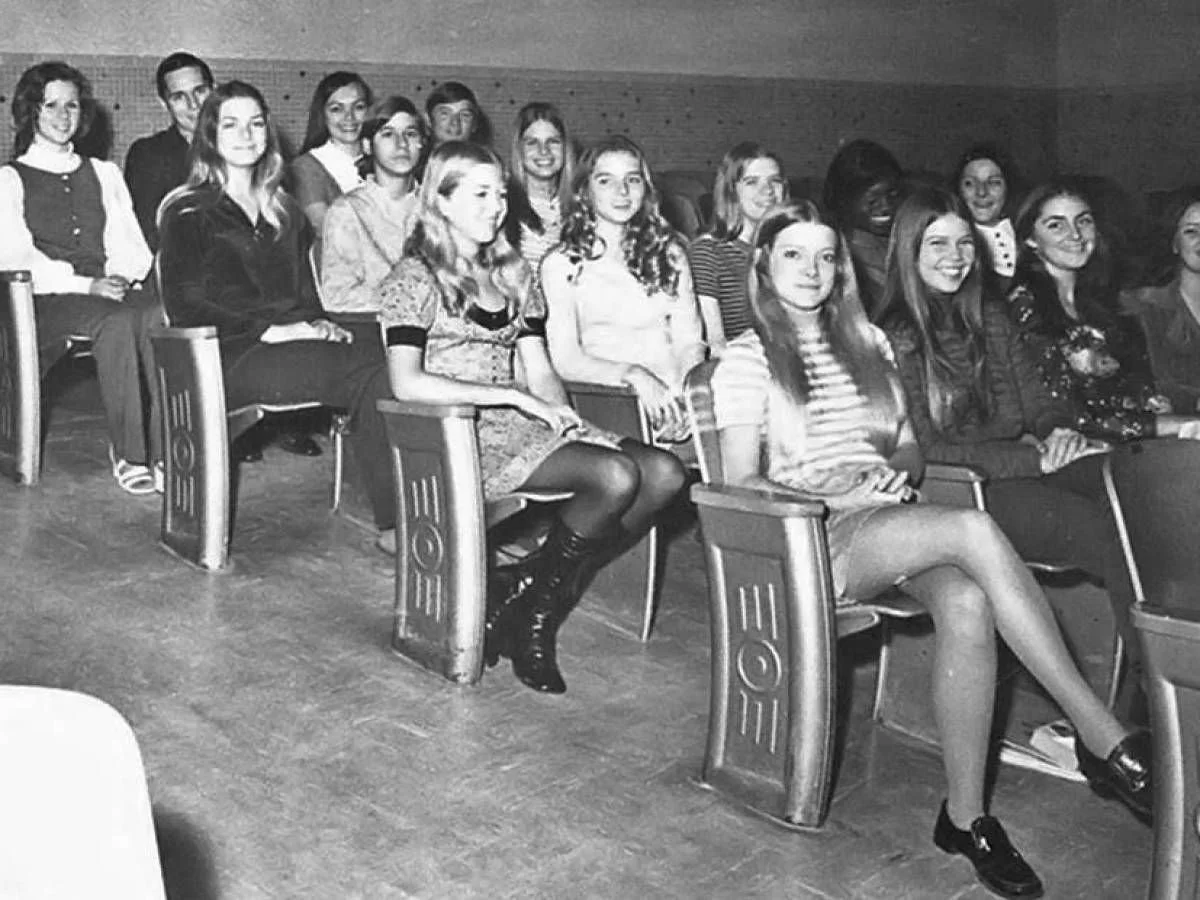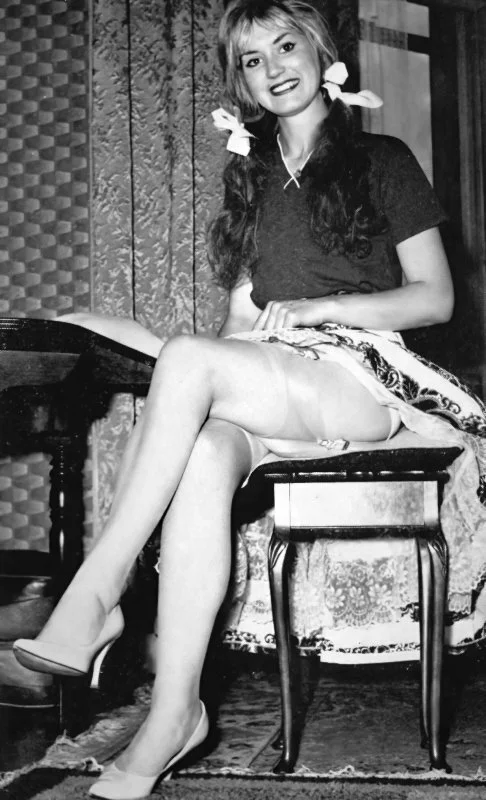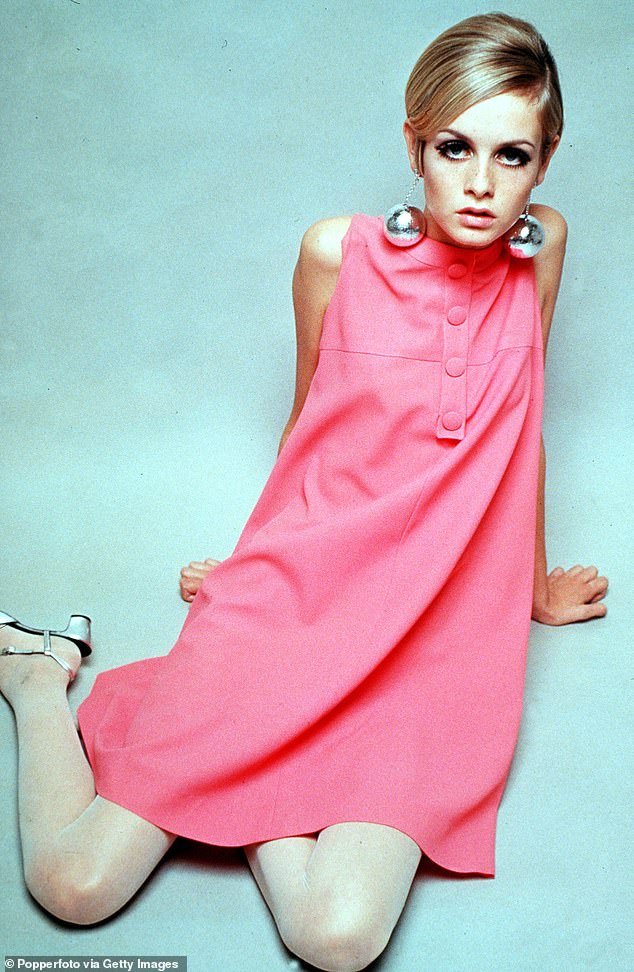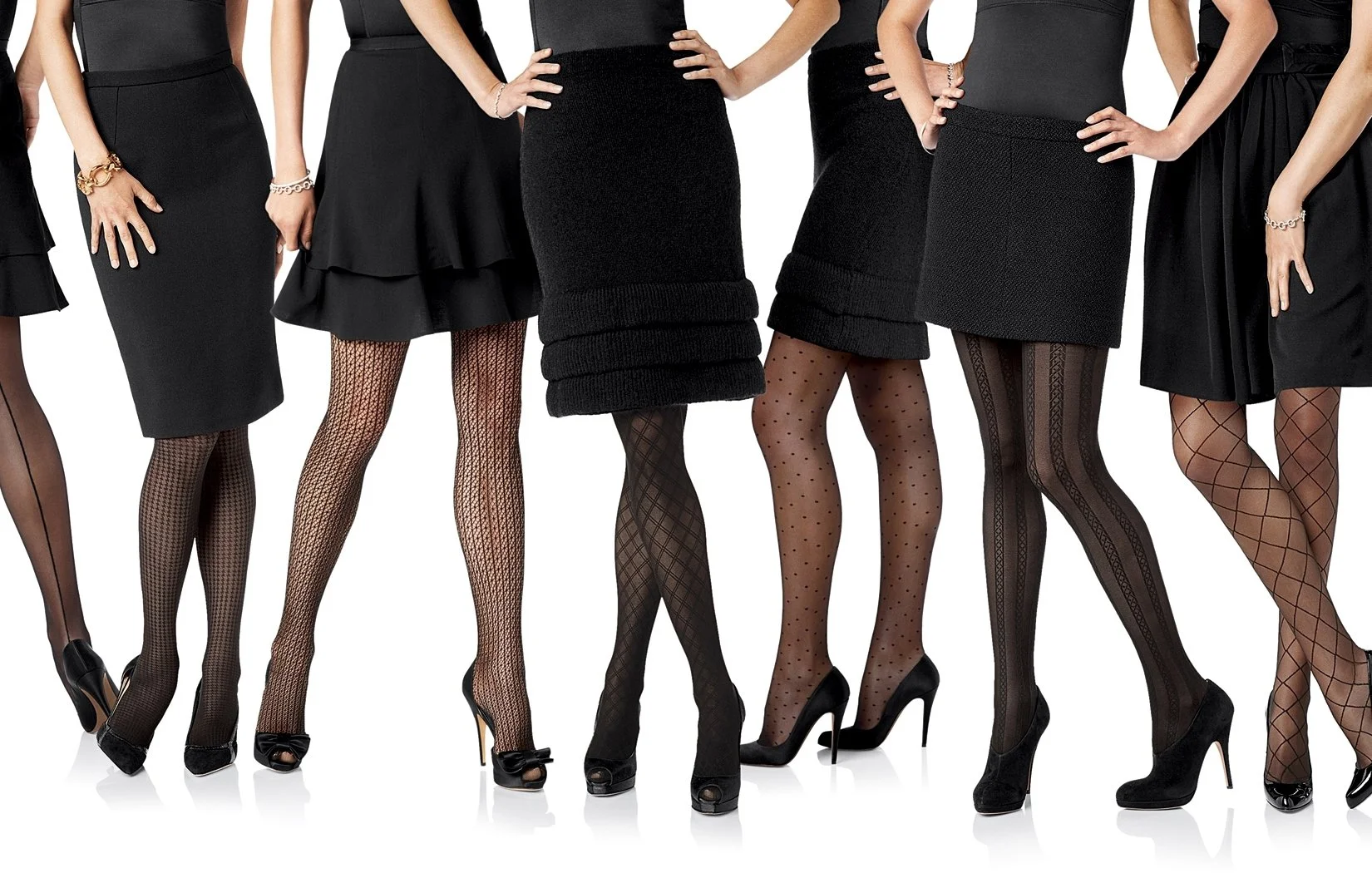The Evolution of Pantyhose: A Journey Through History and Beyond
Pantyhose, the sheer, stretchable tights that cover the legs and waist, are a staple in women's fashion. But their journey from luxury to an everyday essential is a story woven through history, culture, and innovation. This blog post explores the fascinating evolution of pantyhose, tracing their origins, their rise to popularity, and enduring presence in fashion and society.
Origins in Ancient Times
In ancient Mesopotamia and Egypt, the cradles of civilization, clothing was often designed with both function and form in mind. The Sumerians, Akkadians, Assyrians, and Babylonians of Mesopotamia, as well as the ancient Egyptians, primarily used fabrics to protect their legs. They wrapped their legs with linen or wool strips, creating an early form of leg coverings that provided warmth and protection while allowing for flexibility and airflow. In Egypt, these wrappings were often supplemented with sandals made from papyrus or leather, indicating an early understanding of the need for foot protection.
The Greeks and Romans advanced the concept of leg coverings through their use of clothing and armor. The Greeks, known for their draped garments, such as the chiton and himation, occasionally used leg wrappings, especially among soldiers and athletes, for protection and support. The Romans, however, took leg coverings to new levels with their military innovations. Roman soldiers wore caligae, heavy-soled hobnailed sandals, and sometimes used fasciae, strips of cloth wrapped around their legs, as a form of protection and warmth. The wealthier classes in Rome could afford tunic-like garments that extended down to their legs, providing warmth and modesty.
In Northern Europe, the Celts and Norse peoples developed their versions of leg coverings. The Celts were among the first in Europe to wear trousers, a practical solution to the cold and wet climate. These trousers, often made from wool, offered protection against the harsh weather. The Norse, or Vikings, also utilized trousers and added leg wraps, known as wickelbander or winingas, which were wound around the lower leg over trousers. This not only provided extra warmth but also support for the legs during long voyages or battles.
In East Asia, China's long history of silk production led to the development of sophisticated leg garments, including trousers and leggings, which were worn by both men and women across various dynasties. These garments were often part of elaborate outfits that reflected one's social status. In Japan, the samurai class wore hakama, a type of traditional trousers that allowed for mobility and protection. Beneath the hakama, samurai might wear leg wraps for additional support, similar to the leg bindings seen in other cultures.
The true precursor to modern stockings emerged in the Renaissance period. Knitted stockings, made from wool, silk, or cotton, began to replace the cruder leg wraps of the past. This period saw the first use of the knitting machine, invented by William Lee in 1589, which significantly increased the production speed and complexity of patterns in stockings. Silk stockings became highly coveted items, symbolizing wealth and status among the European nobility.
The 18th and 19th centuries saw further refinement in the production and material quality of stockings. Silk stockings continued to be a luxury item, while cotton became a popular material for everyday wear due to its comfort and durability. The Industrial Revolution played a crucial role in making stockings more accessible to the general public, with mechanized knitting machines producing them in mass quantities.
The Roaring Twenties and the Rise of Shorter Hemlines
The inception of pantyhose, a pivotal fashion innovation, was not a sudden breakthrough but a gradual evolution, significantly influenced by societal changes, technological advancements, and visionary individuals. This transformation reshaped women's fashion, offering a new perspective on convenience, elegance, and the expression of femininity. Below, we explore key milestones that mark the birth of pantyhose, highlighting the Roaring Twenties' fashion revolution, the invention of seamless hosiery, and the influential figures who played pivotal roles in the early development of pantyhose.
The 1920s, often referred to as the Roaring Twenties, was a decade of unprecedented change and liberation in the Western world, especially in terms of fashion for women. One of the most iconic and transformative trends of this era was the rise of shorter hemlines in women's dresses. This shift not only marked a significant change in the aesthetic of women's fashion but also reflected broader societal shifts towards greater freedom and independence for women.
The end of World War I in 1918 brought with it a wave of relief and a desire for new beginnings. The 1920s saw significant economic growth, technological advancements, and social changes, including the fight for women's suffrage. Women were increasingly entering the workforce, gaining financial independence, and demanding equal rights. The fashion of the time mirrored this societal shift towards liberation and rebellion against traditional norms.
Central to the fashion revolution of the 1920s was the emergence of the "flapper" style. Flappers were young women known for their energetic freedom, embracing a lifestyle viewed by many as outrageous, immoral, or downright dangerous. They cut their hair into bobs, wore makeup, smoked cigarettes, and danced to jazz music. Most notably, they raised their hemlines.
Before the 1920s, women's fashion was characterized by long, flowing dresses that often reached the ground. These garments were restrictive, both physically and symbolically, limiting women's mobility and reflecting their limited role in society. The shift to shorter hemlines in the 1920s was radical. By 1925, hemlines had risen to the knee, a daring length for the time, allowing women not only greater physical freedom but also signaling their rejection of restrictive social norms.
The rise of shorter hemlines was met with mixed reactions. Many welcomed the change, seeing it as a sign of progress and modernity. Others, however, viewed it as a threat to traditional values. Regardless, the trend was a significant step forward for women's fashion, influencing designers and setting the stage for future innovations.
The 1920s also saw significant innovations in fashion design and materials. Designers like Coco Chanel and Jean Patou became influential figures, promoting simple yet sophisticated styles that contrasted sharply with the pre-war fashion. The introduction of new materials, such as rayon and later nylon, allowed for lighter, more comfortable garments that complemented the active lifestyles of women during this era.
The Invention of Seamless Hosiery
The invention of seamless hosiery marked a significant milestone in the evolution of women's fashion, representing not only a leap forward in comfort and aesthetic appeal but also showcasing the remarkable advances in textile technology. Prior to this innovation, stockings were constructed with a seam running up the back, a feature that, while fashionable in its time, presented various challenges in terms of comfort, durability, and production efficiency. The transition to seamless hosiery revolutionized the industry and changed the way women experienced and interacted with this essential component of their wardrobe.
Historically, stockings were knitted flat and then sewn together, leaving a seam running up the back of the leg. This method of manufacturing was the standard for centuries, with the seam becoming a symbol of sophistication and elegance, particularly during the first half of the 20th century. Seamed stockings, especially those made from silk and nylon, were highly prized for their aesthetic appeal, with the seam adding a contouring effect that accentuated the shape of the leg.
The production of seamless hosiery was made possible through advances in knitting technology. Circular knitting machines were adapted and refined to knit stockings in the round, creating a tube-like fabric that perfectly conformed to the shape of the leg without the need for a seam. This technology allowed for increased production speeds and efficiency, making hosiery more affordable and accessible to a broader audience.
The introduction of seamless hosiery had a profound impact on fashion and society. It coincided with the rise of shorter hemlines and more form-fitting silhouettes, complementing the evolving fashion trends of the mid-20th century. The seamless design also reflected a growing preference for simplicity and functionality in clothing, mirroring broader societal shifts towards modernity and efficiency.
Seamless hosiery offered women a level of comfort and freedom previously unattainable, allowing for greater mobility and flexibility in their daily lives. It also democratized fashion to some extent, as the increased affordability and availability of hosiery enabled more women to participate in contemporary fashion trends.
DuPont's Contribution to Pantyhose: A Legacy of Innovation
DuPont, an American conglomerate known for its pioneering chemical research, played a pivotal role in the development and widespread adoption of pantyhose. This contribution is primarily through the invention of nylon, the first synthetic fiber, which revolutionized the hosiery industry and laid the foundation for the creation of pantyhose. DuPont's innovations in synthetic materials not only transformed women's fashion but also marked a significant technological advancement in textile manufacturing.
The story of DuPont's contribution to pantyhose begins in the 1930s with the invention of nylon. Led by chemist Wallace Carothers, the DuPont team developed nylon as part of a broader research program into synthetic polymers. Introduced in 1938, nylon was the world’s first fully synthetic fiber, heralded for its strength, elasticity, and resistance to water and chemicals. Nylon's introduction to the market came in the form of stockings in 1940, which were an instant success, offering a durable, affordable, and sheer alternative to silk stockings, which were scarce due to wartime silk shortages.
Nylon stockings became a staple of women's fashion in the 1940s. However, as fashion trends evolved, particularly with the rising popularity of shorter skirts in the 1960s, the demand for a more practical and comfortable hosiery solution led to the development of pantyhose. Pantyhose, which combined the function of stockings with an attached panty, required a material that was both elastic and strong. Nylon, with its unparalleled durability and stretchability, was the ideal choice. DuPont's creation of nylon directly enabled the development of pantyhose, offering women a seamless, figure-enhancing garment that was both comfortable and stylish.
In addition to nylon, DuPont made another significant contribution to the evolution of pantyhose through the development of Lycra (spandex). Introduced in 1958, Lycra offered exceptional elasticity, allowing pantyhose to stretch and conform to the body without losing shape. The integration of Lycra into nylon pantyhose improved their fit, feel, and durability, making them even more appealing to consumers. This innovation ensured that pantyhose could accommodate a wide range of body types and movements, further solidifying their place in women's wardrobes.
Prior to the advent of nylon, silk was the material of choice for high-quality hosiery. However, silk was expensive, delicate, and often difficult to obtain, especially during times of geopolitical tension like World War II. The introduction of nylon by DuPont offered an alternative that was not only more durable and elastic but also more affordable. The debut of nylon stockings was nothing short of sensational. Women flocked to stores in droves, and nylon stockings quickly became a coveted item, symbolizing both luxury and the technological prowess of the synthetic age.
The outbreak of World War II shortly after the introduction of nylon stockings led to a significant shift in production. Nylon's durability and elasticity made it an invaluable material for military applications, including parachutes, tents, and ropes. Consequently, the production of nylon stockings was halted, leading to widespread shortages. Women went to great lengths to procure nylon stockings, which became a symbol of glamour and normalcy amid the war's hardships. The scarcity of nylon stockings during this period underscored the material's impact on fashion and its importance to the civilian population.
The end of World War II saw the resumption of nylon stocking production, leading to a post-war boom in the hosiery industry. The demand for nylon stockings surged, underscoring their status as an essential fashion accessory for women. The 1950s and 1960s witnessed further innovation with the introduction of pantyhose, which were made possible by the stretchability and strength of nylon. Pantyhose offered a practical solution to the garter belts and stockings of the past, providing a seamless look that complemented the rising hemlines of the era's fashion trends.
The Birth of Pantyhose: A Revolutionary Chapter in Fashion
The invention of nylon by Wallace Carothers and his team at DuPont set the stage for the pantyhose revolution. However, it wasn't until the 1960s that the full potential of nylon as a hosiery material was realized. The introduction of seamless, stretchable nylon pantyhose offered an alternative to the traditional stockings and garter belts, providing women with a smoother, more comfortable fit. This innovation coincided with the burgeoning feminist movement, resonating with women seeking both liberation from restrictive clothing and a means to express their individuality and style with greater freedom.
The fashion revolution of the 1960s was epitomized by the mini skirt, introduced by designers like Mary Quant and André Courrèges. The mini skirt's radical departure from the conservative hemlines of previous decades demanded a reevaluation of legwear. Pantyhose, with their seamless and sleek look, emerged as the perfect complement, enabling women to wear shorter hemlines confidently and comfortably. This symbiotic relationship between the mini skirt and pantyhose fueled their popularity, making pantyhose a ubiquitous element of women's fashion.
The rise of pantyhose was further bolstered by their endorsement by iconic figures of the era, from Hollywood actresses to first ladies. Public figures like Twiggy, the emblematic British model and fashion icon, were often seen sporting pantyhose, cementing their status as a fashionable and modern choice. Moreover, the widespread visibility of pantyhose in popular media, from magazines to television, played a crucial role in normalizing and popularizing the garment among the general public.
The 1960s also witnessed the crescendo of the feminist movement, challenging traditional gender norms and advocating for women's rights and equality. In this context, pantyhose offered women a blend of practicality and aesthetic appeal, aligning with the movement's emphasis on personal choice and liberation from restrictive clothing. However, it's important to note that pantyhose also became a point of contention within the movement, with some viewing them as symbols of the beauty standards imposed on women.
The merging of stockings and panties to create pantyhose was a pivotal development in the evolution of women's fashion. It was a response to the practical needs of modern women, made possible by technological advancements and driven by changing fashion sensibilities. Pantyhose symbolized freedom and flexibility, aligning with the growing women's liberation movement and the dynamic spirit of the times. As a garment, pantyhose epitomize the intersection of functionality and fashion, demonstrating how innovation can transform everyday life and cultural norms.
Pantyhose and Femininity: Reflecting and Shaping the Mid-20th Century Ideals
The mid-20th century marked a period of significant evolution in societal norms and fashion trends, particularly concerning women's roles and identities. Central to this transformation was the emergence of pantyhose, which became not just a garment of convenience and comfort but also a symbol of femininity and professionalism. Through the lens of the idealized image of women during this era and the role of pantyhose in embodying femininity and professionalism, we can explore how this seemingly simple garment influenced perceptions and standards of female beauty and conduct.
The mid-20th century was characterized by a complex interplay of traditional and evolving ideals of femininity. Post-World War II society leaned towards a re-establishment of traditional gender roles, with women being idealized as homemakers and symbols of domestic stability. However, as the century progressed, especially into the 1960s and beyond, there was a shift towards recognizing women's independence, intelligence, and professional capabilities. Fashion played a crucial role in reflecting and shaping these ideals, with clothing and accessories serving as markers of femininity, social status, and even political stance.
In this context, the idealized image of women was one that balanced traditional notions of grace and beauty with emerging values of independence and professionalism. This duality was perfectly encapsulated in the pantyhose, which became a staple of women's fashion during this transformative period.
Pantyhose emerged as a revolutionary garment that offered women an unparalleled blend of style, convenience, and functionality. They provided a seamless, polished look that was deemed essential for the professional woman, enhancing the appearance of the legs with a sheer, uniform coating that symbolized sophistication and elegance. This aesthetic appeal was coupled with practical benefits, such as warmth and the elimination of the need for garters, making pantyhose a symbol of the modern woman's efficiency and practicality.
Moreover, pantyhose embodied the evolving standards of femininity in the mid-20th century. They were seen as a marker of a well-groomed, aesthetically pleasing appearance that did not compromise the wearer's ability to participate fully in professional and social spheres. The garment's association with the burgeoning women's liberation movement further reinforced its status as a symbol of a new kind of femininity—one that embraced traditional beauty standards while asserting women's rights to independence and equal opportunity.
In the professional realm, pantyhose became almost a uniform for working women, encapsulating the era's ideals of professionalism. They signified a woman's readiness to engage with the professional world on her terms, blending traditional femininity with modern professionalism. This was particularly poignant during a time when women were fighting for recognition and equality in the workplace.
Pantyhose, in their simplicity, became a potent symbol of mid-20th-century femininity, embodying the era's complex and evolving ideals. As a marker of both beauty and professionalism, they reflected the societal shift towards a more inclusive understanding of women's roles. Pantyhose served as a bridge between the traditional and the modern, offering women a means to express their femininity, ambition, and professionalism. In doing so, they became more than just a garment; they became a symbol of the changing times, capturing the spirit of an era that saw significant strides in redefining what it meant to be a woman.
Pop Culture and Pantyhose: A Seamless Integration
Pantyhose, emerging as a fashion staple in the mid-20th century, swiftly transcended their initial functional and aesthetic appeal, embedding themselves into the fabric of early pop culture. Their presence in films, television, and advertising not only mirrored contemporary fashion trends but also influenced them, marking iconic moments in popular culture that continue to resonate. This integration of pantyhose into early pop culture through various mediums and their role in iconic moments provides a fascinating lens through which to explore the garment's impact beyond mere functionality.
The proliferation of pantyhose in the 1960s coincided with a booming era for television and film, industries that played pivotal roles in disseminating fashion trends to a wide audience. Pantyhose found their way into popular TV shows and movies, often showcased by leading actresses who set the standards for beauty and style. This visibility not only cemented pantyhose's status as a fashionable and desirable item but also communicated a modern vision of femininity and sophistication to viewers at home.
Advertising, too, played a crucial role in popularizing pantyhose, with ad campaigns often emphasizing the sheer elegance, improved comfort, and the practicality of pantyhose over traditional stockings. These advertisements were not merely selling a product; they were selling an ideal of modern womanhood, encapsulated in the sleek, smooth lines that pantyhose provided. Notably, the advertising of pantyhose often leveraged the allure of Hollywood and television stars, further blurring the lines between fashion, celebrity culture, and the everyday wardrobe choices of the average woman.
Several iconic moments in pop culture history have featured pantyhose, further entrenching their status in the fashion and cultural zeitgeist. One such moment was when the miniskirt's popularity surged, and pantyhose became essential for achieving the complete look, epitomized by fashion icons like Jean Shrimpton. These models, often photographed in miniskirts paired with sleek pantyhose, became emblematic of the era's fashion revolution, influencing women worldwide to embrace this new style.
Another significant moment came from the world of film and television, where pantyhose were often part of the on-screen wardrobe, contributing to character development and the visual storytelling of films and shows. For example, the appearance of pantyhose in workplace settings on television subtly underscored the changing role of women in society, moving into professional spheres with confidence and style.
Furthermore, pantyhose played a symbolic role in certain films and TV shows, representing a shift towards modernity and the breaking away from older, more restrictive forms of women's wear. This transition was not just about fashion but also about reflecting broader social changes and the evolving role of women in public and private life.
Pantyhose's integration into early pop culture through films, television, and advertising played a significant role in shaping and reflecting the fashion and societal norms of the mid-20th century. The iconic moments that featured pantyhose were not merely highlights of a fashion trend but signifiers of a broader cultural shift towards a more modern, liberated view of womanhood. Through their visibility and endorsement by cultural icons, pantyhose transcended their utilitarian origins, becoming a symbol of elegance, professionalism, and the evolving landscape of women's fashion. As such, they hold a unique place in the annals of fashion history, emblematic of a time of significant change and progress
Pantyhose Fashion Trends and Innovations: A Stylish Evolution
Pantyhose, once a revolutionary garment that merged stockings with panties, have evolved significantly since their inception in the mid-20th century. Beyond their initial functional appeal, pantyhose have undergone a fascinating transformation, reflecting changes in fashion sensibilities, technological advancements, and cultural shifts. Let’s explore the evolution of pantyhose designs, the introduction of sheer and opaque variations, and the fashion-forward trends that have made pantyhose a versatile and enduring element of style.
The journey of pantyhose from a simple, practical garment to a fashion statement has been marked by constant innovation. Initially designed to offer a seamless, polished look, pantyhose have diversified to meet the changing tastes and needs of consumers. Early designs focused on practicality and durability, but as fashion trends evolved, so too did the design of pantyhose. Innovations in textile manufacturing and the introduction of new materials have enabled the creation of pantyhose in a variety of textures, colors, and patterns, transforming them into an accessory capable of complementing or even defining an outfit.
One of the most significant developments in the world of pantyhose has been the introduction of sheer and opaque variations. Sheer pantyhose, offering a subtle, polished finish, became a staple in professional and formal settings, epitomizing elegance and sophistication. On the other hand, opaque pantyhose, with their denser, more concealing fabric, provided not only warmth and comfort during colder months but also a canvas for more bold and experimental fashion choices. This diversification allowed pantyhose to cater to a broader range of occasions, preferences, and weather conditions, enhancing their appeal and versatility.
The true testament to the enduring popularity of pantyhose lies in the continuous experimentation and fashion-forward trends that have emerged over the years. Designers and fashion enthusiasts have played with color, texture, and pattern to create statement pieces that defy traditional norms. From bold, vibrant hues to intricate lace and fishnet designs, pantyhose have become a medium for personal expression and stylistic innovation. Limited-edition collections and collaborations between hosiery brands and designers have further pushed the boundaries, introducing avant-garde designs that challenge conventional ideas of what pantyhose can be.
In recent years, the rise of eco-conscious fashion has also influenced pantyhose design, with brands developing sustainable options made from recycled materials and employing eco-friendly production processes. This shift not only addresses environmental concerns but also caters to the growing demand for responsible and ethical fashion choices.
Navigating the Shift: Pantyhose Preferences and Emerging Alternatives
In the ever-evolving landscape of fashion, the narrative of pantyhose offers a compelling study of change, reflecting shifts in societal norms, lifestyle adaptations, and aesthetic preferences. Once deemed an indispensable component of a woman's wardrobe, the decline in pantyhose usage marks a significant shift towards more relaxed dress codes and a redefined concept of comfort and style. This transition has been characterized by the rise of bare legs and alternatives like leggings, signifying a broader trend towards versatility and practicality in fashion choices.
The zenith of pantyhose popularity could arguably be traced back to the latter half of the 20th century when they were a symbol of sophistication and professionalism. However, the turn of the millennium witnessed a gradual shift, as cultural attitudes towards formal dress codes began to relax. The tech boom and the rise of startup culture played pivotal roles, promoting a more casual approach to workplace attire. Moreover, the growing feminist movement questioned traditional standards of female beauty, empowering women to embrace their natural appearance without adherence to restrictive fashion norms. This combination of factors contributed to the decline in pantyhose usage, as women sought alternatives that aligned more closely with contemporary values of comfort, autonomy, and authenticity.
As pantyhose began to fade from the forefront of fashion essentials, the trend of bare legs gained momentum, fueled by high-profile figures and celebrities who embraced and popularized the look. This shift was not merely about rejecting pantyhose but symbolized a broader movement towards embracing natural beauty and individuality. The acceptance of bare legs in professional and formal settings reflected changing perceptions of femininity and professionalism, breaking down longstanding fashion dictums.
Parallel to the bare-leg trend, the emergence of alternatives like leggings represented a transformative phase in women's fashion. Leggings offered the comfort and flexibility that pantyhose could not, adapting effortlessly to a variety of settings, from the gym to the office. Their versatility was further enhanced by advancements in fabric technology, introducing breathable, moisture-wicking materials suitable for an active lifestyle. The fashion industry's response was swift, with designers incorporating leggings into high fashion collections, elevating their status from functional activewear to stylish wardrobe staples.
The decline in pantyhose usage and the concurrent rise of bare legs and leggings underscore a significant cultural shift in fashion preferences. This transition speaks to a larger narrative of empowerment, comfort, and versatility, reflecting modern women's desires to define their style on their own terms. While pantyhose may no longer hold the undisputed place in fashion they once did, their evolution offers valuable insights into the changing landscape of fashion and society. As preferences continue to evolve, the essence of fashion as a form of self-expression and identity remains constant, embracing change as an integral part of its narrative.
Pantyhose Today and Beyond: A Timeless Accessory in Modern Wardrobes
Pantyhose, a garment that has woven its way through the fabric of fashion history, continues to hold a place in contemporary style and beyond. Despite shifts in fashion trends and the rise of alternatives, pantyhose maintain their allure in specific sectors and among enthusiasts of vintage and retro styles. This blog post delves into the enduring appeal of pantyhose within certain industries and their cherished status among vintage and retro fashion aficionados, shedding light on how this iconic item remains relevant in today's dynamic fashion landscape.
In the professional world, particularly within industries that uphold traditional standards of formal attire, pantyhose remain a staple. Legal, finance, and certain corporate sectors often favor a conservative dress code, where pantyhose are seen as an element of professionalism and polish. The hospitality industry, including airlines and high-end hotels, also often includes pantyhose as part of the uniform code, aiming to present a refined and cohesive appearance.
Moreover, the entertainment industry continues to showcase the glamour associated with pantyhose, whether on the red carpet, in film, or on stage. Pantyhose add a finishing touch to outfits, enhancing the visual appeal with a sheen that complements the overall aesthetic. In these contexts, pantyhose are not merely about adhering to a dress code but are chosen for their ability to elevate a look, demonstrating their lasting appeal in sectors where presentation and style are paramount.
The resurgence of vintage and retro fashion has brought with it a renewed appreciation for pantyhose. Fashion enthusiasts drawn to the styles of the 20th century—particularly the 1940s to the 1960s—often incorporate pantyhose into their wardrobes as a nod to the authenticity and charm of those eras. Vintage fashion is not just about recreating looks from the past; it's about capturing the essence and elegance that pantyhose add to an outfit.
Retro fashion influencers and enthusiasts frequently showcase pantyhose in their ensembles, using social media platforms to highlight the garment's versatility and timeless appeal. From classic sheer nylons to patterned and textured variations, pantyhose offer a way to personalize and complete a vintage-inspired look. The community of vintage and retro fashion lovers cherishes pantyhose not only for their historical accuracy but also for the touch of sophistication they bring to modern interpretations of past trends.
Pantyhose, with their rich history and versatility, continue to weave their magic in the fabric of today's fashion world. Their enduring appeal in certain professional and entertainment industries underscores their role as a symbol of elegance and formality. Meanwhile, the vintage and retro fashion movement celebrates pantyhose as a cherished accessory, a testament to their timeless beauty and the enduring fascination with the styles of bygone eras. As fashion continues to evolve, pantyhose stand as a reminder of the enduring nature of style, transcending trends to remain a beloved and iconic element of wardrobe expression, today and beyond.
Embracing Sustainability and Innovation: The Future of Pantyhose
In an era where sustainability and innovation are at the forefront of consumer demands, the hosiery industry is undergoing a significant transformation. Pantyhose, a staple in wardrobes around the world, are being reimagined with an eye toward environmental responsibility and cutting-edge technology. This evolution reflects a broader shift in the fashion industry, aiming to balance aesthetic appeal with ethical considerations. Let's explore how sustainable materials and technological advancements are shaping the future of pantyhose, offering consumers choices that are not only stylish but also kind to the planet and more durable and comfortable than ever before.
The movement towards sustainability in hosiery production is gaining momentum, with brands exploring eco-friendly materials to reduce environmental impact. Traditional nylon, while popular for its durability and sheen, is petroleum-based and not biodegradable, posing challenges for sustainability. In response, the industry is turning to alternative materials such as recycled nylon and polyester, which are made from post-consumer plastic waste, including fishing nets and fabric scraps. These materials offer a way to repurpose plastic waste, reducing landfill and ocean pollution.
Moreover, the use of natural fibers like organic cotton, bamboo, and even innovations like yarns made from coffee grounds and seaweed, is on the rise. These materials not only minimize the use of chemicals and water in production but also offer biodegradable options that can significantly lower the environmental footprint of pantyhose. By incorporating sustainable materials, hosiery manufacturers are not only addressing environmental concerns but are also meeting the growing consumer demand for eco-conscious fashion choices.
In addition to exploring sustainable materials, the hosiery industry is leveraging technological advancements to enhance the comfort and durability of pantyhose. Innovations in knitting and weaving technologies have led to the creation of pantyhose that offer superior fit, flexibility, and resistance to runs and tears. For instance, 3D knitting technology allows for the production of seamless pantyhose that provide an even pressure distribution, enhancing comfort for all-day wear.
Furthermore, treatments and finishes are being developed to extend the life of pantyhose, reducing the need for frequent replacements. Features such as moisture-wicking capabilities, antimicrobial treatments, and UV protection add functional value to pantyhose, making them more adaptable to the wearer's needs and lifestyles. These technological advancements not only improve the user experience but also contribute to sustainability by ensuring that the products have a longer wearable life, ultimately reducing waste.
The intersection of sustainability and innovation in the production of pantyhose marks a promising direction for the future of hosiery. By embracing sustainable materials, the industry is addressing the critical issue of environmental impact, offering consumers fashion choices that align with eco-friendly values. Simultaneously, technological advancements in comfort and durability are enhancing the practicality and appeal of pantyhose, ensuring they remain a valued component of the modern wardrobe. As we move forward, the continued focus on sustainability and innovation in pantyhose production will not only benefit the planet but also redefine what consumers can expect from their hosiery, blending style, comfort, and conscience in every stitch.


